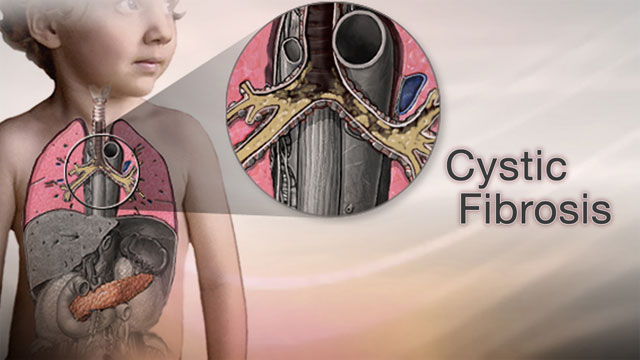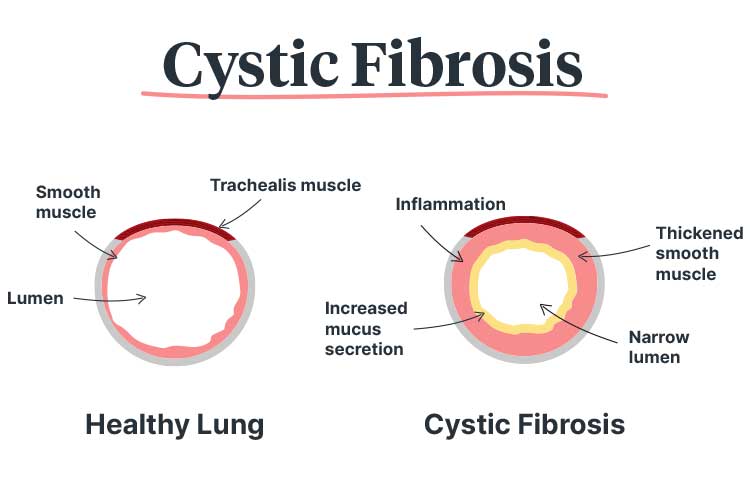Living with cystic fibrosis (CF) is like navigating a perpetual storm. Not only is it a battle against the elements of nature in terms of health, but it’s also an enduring financial struggle. Imagine you’re on a lifelong journey, but your path is littered with obstacles that demand both physical and financial resilience. This is the reality for many families dealing with CF. With its extensive medical requirements and the profound impact on daily life, cystic fibrosis doesn’t just affect the individual; it ripples through the fabric of families and communities.
Understanding the financial burden of CF is crucial. It’s not just about numbers and costs; it’s about understanding the hidden emotional and financial toll that this chronic illness inflicts. In this article, we will delve into the various facets of the financial strain that CF imposes, exploring everything from medical expenses to the challenges faced by caregivers. We’ll also look at how insurance plays a role, what kind of support is available, and what innovations might help ease these burdens in the future.
So, buckle up as we journey through the intricate landscape of cystic fibrosis and the financial challenges it presents. Whether you’re directly affected by CF, a healthcare professional, or just someone eager to learn, this exploration will provide you with a comprehensive understanding of why addressing the financial burden of CF is more important now than ever.
What is Cystic Fibrosis?
Cystic fibrosis is a genetic disorder that primarily affects the lungs but can also impact the pancreas, liver, kidneys, and intestines. It’s like a cunning thief that robs individuals of their health slowly over time. CF is caused by mutations in the CFTR gene, leading to the production of thick and sticky mucus that clogs the airways and traps bacteria, resulting in repeated lung infections and progressive lung damage.
Symptoms can range from mild to severe and may include persistent coughing, frequent lung infections, wheezing, difficulty breathing, and digestive problems. Diagnosing CF often involves a combination of genetic testing, sweat tests, and clinical evaluations.
Globally, CF is more prevalent among Caucasians, especially those of Northern European descent, with about 70,000 people affected worldwide. Although advancements in treatment have significantly increased the life expectancy of those with CF, the financial burden remains a critical concern.

Medical Costs Associated with Cystic Fibrosis
The medical expenses associated with CF are substantial. These costs are akin to climbing a mountain where each step is steeper and more demanding. Direct medical costs include medications, hospitalisations, and routine check-ups, which are necessary to manage the disease and prevent complications.
- Medications: CF patients often require a cocktail of medications, including antibiotics, bronchodilators, mucolytics, and pancreatic enzyme supplements. These drugs are essential but can be exorbitantly expensive.
- Hospital Visits: Regular hospital visits and sometimes lengthy stays are commonplace for CF patients, especially during exacerbations of the disease. Each visit contributes to mounting healthcare costs.
- Regular Check-Ups: Continuous monitoring and testing, such as lung function tests and imaging, are critical in managing CF effectively. These check-ups, though necessary, add to the financial strain.
- Insurance Coverage Challenges: While health insurance can alleviate some of these costs, many families face high out-of-pocket expenses due to insurance limitations, co-pays, and deductibles. Navigating the insurance landscape can feel like wading through a bureaucratic swamp, often leaving families overwhelmed and frustrated.
Non-Medical Expenses
Beyond medical bills, CF also demands significant non-medical expenses that can strain household finances. It’s like a relentless financial wave that crashes repeatedly, impacting various aspects of life.
- Travel and Accommodation: Many patients need to travel to specialised CF centres for treatment, incurring travel and accommodation costs. These expenses can accumulate rapidly, especially for those living in rural or underserved areas.
- Dietary and Lifestyle Adaptations: CF patients often require a high-calorie, nutrient-rich diet to maintain their health. Special dietary needs can increase grocery bills significantly.
- Impact on Education and Employment: The demands of managing CF can affect educational attainment and career prospects. Parents may need to reduce work hours or leave jobs to care for their child, leading to a loss of income.
The Role of Health Insurance
Health insurance plays a crucial role in managing CF-related costs, but it’s not without its hurdles. Think of it as a lifeline that occasionally gets tangled, requiring patience and persistence to untangle.
- Types of Insurance Plans: CF patients may rely on private insurance, government programs like Medicare and Medicaid, or a combination. Each has its pros and cons, influencing the extent of coverage.
- Limitations and Exclusions: Insurance plans often have limitations on coverage, exclusions for certain treatments, and a complex web of policies that can leave families with unexpected expenses.
- Navigating Insurance Claims: The process of filing and managing insurance claims can be daunting. Understanding policy details, keeping meticulous records, and advocating for coverage are essential yet time-consuming tasks.
Government and Charity Support
Support from government programs and charitable organisations can provide a financial lifeline to families affected by CF. It’s like finding an oasis in a financial desert, offering respite and relief.
- Government Programs and Subsidies: Various government initiatives provide financial assistance to families, including disability benefits and healthcare subsidies. These programs are vital in reducing the financial burden.
- Role of Charitable Organisations: Charities play a significant role in supporting CF patients through financial aid, counselling, and community support. Organisations like the Cystic Fibrosis Foundation and others offer grants and resources.
- How to Access Financial Aid: Families can access financial support by researching available programs, contacting relevant organisations, and applying for assistance. It’s important to be proactive and persistent in seeking help.
Impact on Families and Caregivers
The financial strain of CF extends beyond the patient, impacting families and caregivers profoundly. It’s like a ripple effect that touches every aspect of family life, requiring resilience and adaptation.
- Emotional and Financial Stress: The emotional toll of managing CF can be as overwhelming as the financial stress. Families often experience anxiety and burnout, balancing care and financial responsibilities.
- Long-Term Care Considerations: Planning for the future, including long-term care and financial stability, is essential. Families must navigate decisions about work, savings, and future medical needs.
- Strategies for Financial Planning: Effective financial planning involves budgeting, seeking professional advice, and exploring financial assistance options. Building a robust financial plan can mitigate some of the financial burdens.
Comparing Costs Internationally
The financial burden of CF varies across countries, influenced by healthcare systems and economic factors. It’s like a global puzzle where each piece represents a different financial reality.
- Differences in Treatment Costs Across Countries: Treatment costs can vary significantly, with some countries offering more comprehensive coverage than others. Understanding these differences can highlight areas for improvement.
- The Role of Healthcare Systems: National healthcare systems play a pivotal role in determining the financial burden on CF patients. Countries with universal healthcare may offer more support, reducing out-of-pocket expenses.
- Case Studies and Comparisons: Examining case studies from different countries can provide insights into effective strategies for managing CF costs. These comparisons can inspire policy changes and improvements.

Innovations and Research in CF Treatment
Ongoing research and innovation offer hope for reducing the financial burden of CF. It’s like a beacon of light in a storm, guiding the way toward more affordable and effective treatments.
- New Treatments and Their Cost Implications: Recent advancements in CF treatment, such as gene therapy and new medications, promise improved outcomes. However, these innovations often come with high price tags.
- Potential for Reducing Financial Burden: As research progresses, there is potential for cost-effective treatments that alleviate financial pressure. Continued investment in research is essential for long-term solutions.
- Importance of Ongoing Research and Support: Supporting research and advocating for policy changes can drive progress in CF treatment. Collective efforts can lead to breakthroughs that benefit the CF community.
Conclusion
Cystic fibrosis is a complex disease that imposes a significant financial burden on patients and their families. Addressing these challenges requires a multi-faceted approach, involving healthcare providers, policymakers, and support organisations. By raising awareness and advocating for comprehensive support systems, we can work toward reducing the financial strain of CF. It’s time for society to come together and ensure that those affected by CF receive the care and support they need without the added burden of financial stress.
FAQs
1. What are the main financial challenges for CF patients?
CF patients face numerous financial challenges, including high medical costs, insurance limitations, and non-medical expenses such as travel and dietary needs.
2. How can families manage the costs associated with CF?
Families can manage CF costs by exploring financial assistance programs, utilising insurance effectively, and implementing strategic financial planning.
3. Are there any financial assistance programs for CF patients?
Yes, various government programs, charities, and organisations offer financial aid and resources to support CF patients and their families.
4. How does health insurance impact CF treatment costs?
Health insurance can significantly reduce CF treatment costs, but limitations and exclusions often lead to additional out-of-pocket expenses.
5. What are the global differences in CF treatment costs?
CF treatment costs vary worldwide, influenced by healthcare systems and economic factors. Some countries offer more comprehensive coverage than others.
6. How does CF affect employment opportunities?
CF can impact employment due to frequent medical appointments and health challenges, leading to reduced work hours or career changes.
7. What are the latest advancements in CF treatment?
Recent advancements include gene therapy and new medications, offering improved outcomes but often at high costs. Ongoing research aims to reduce these financial burdens.